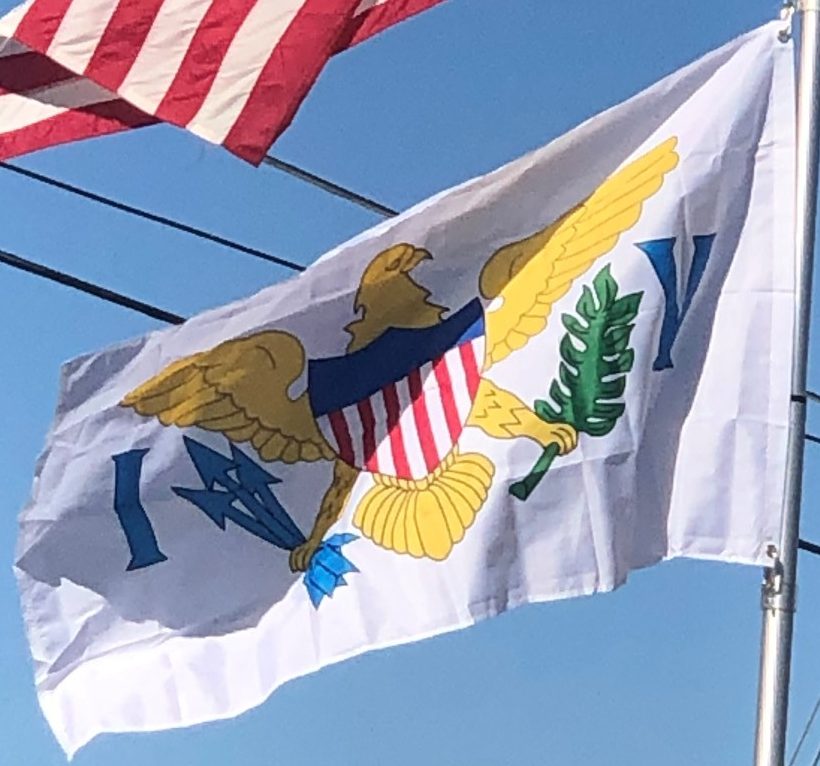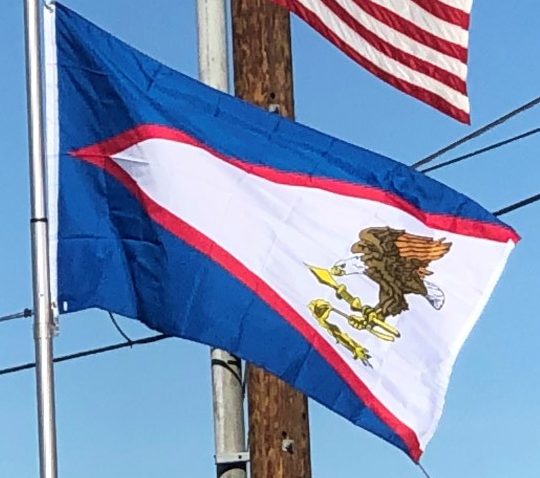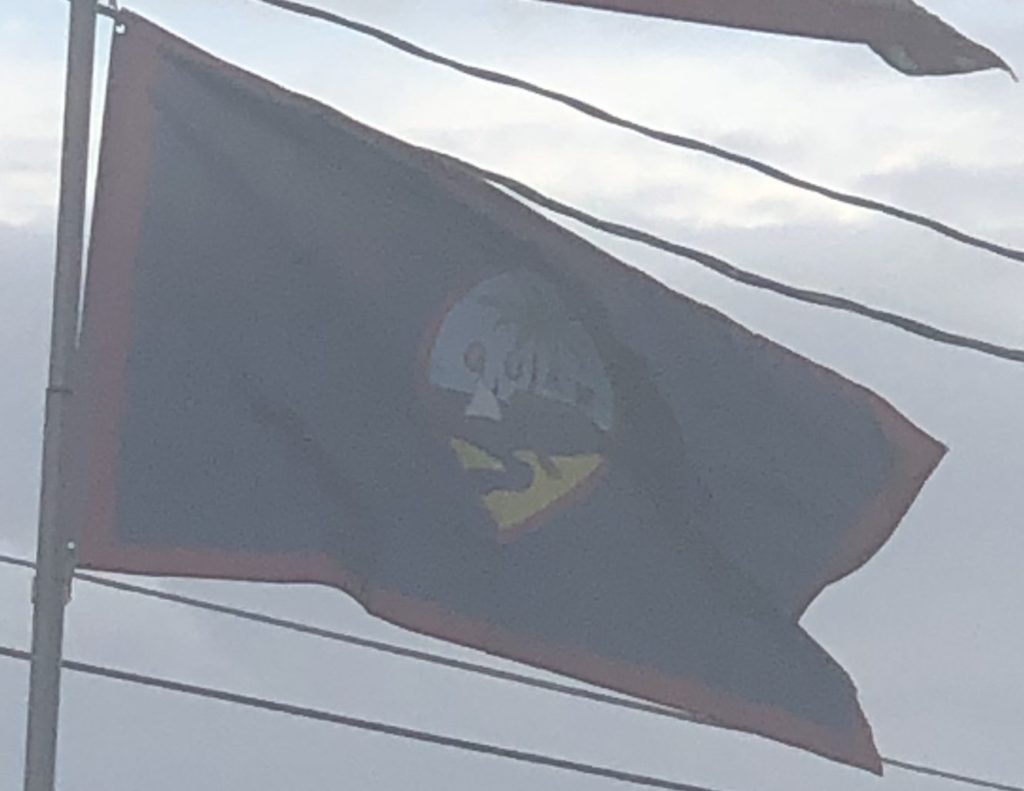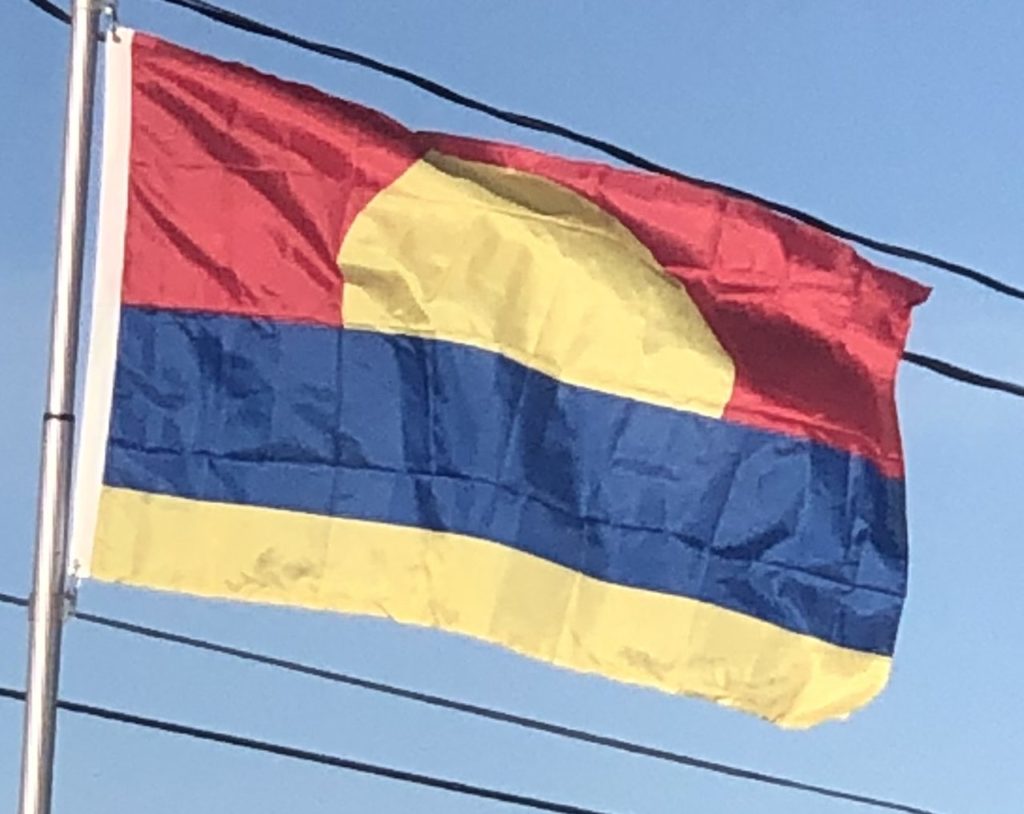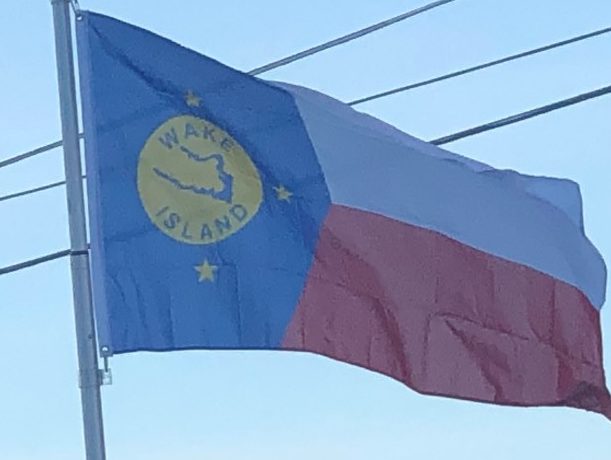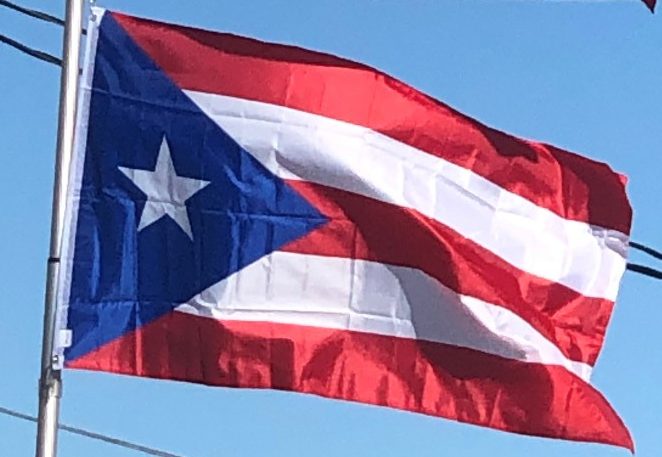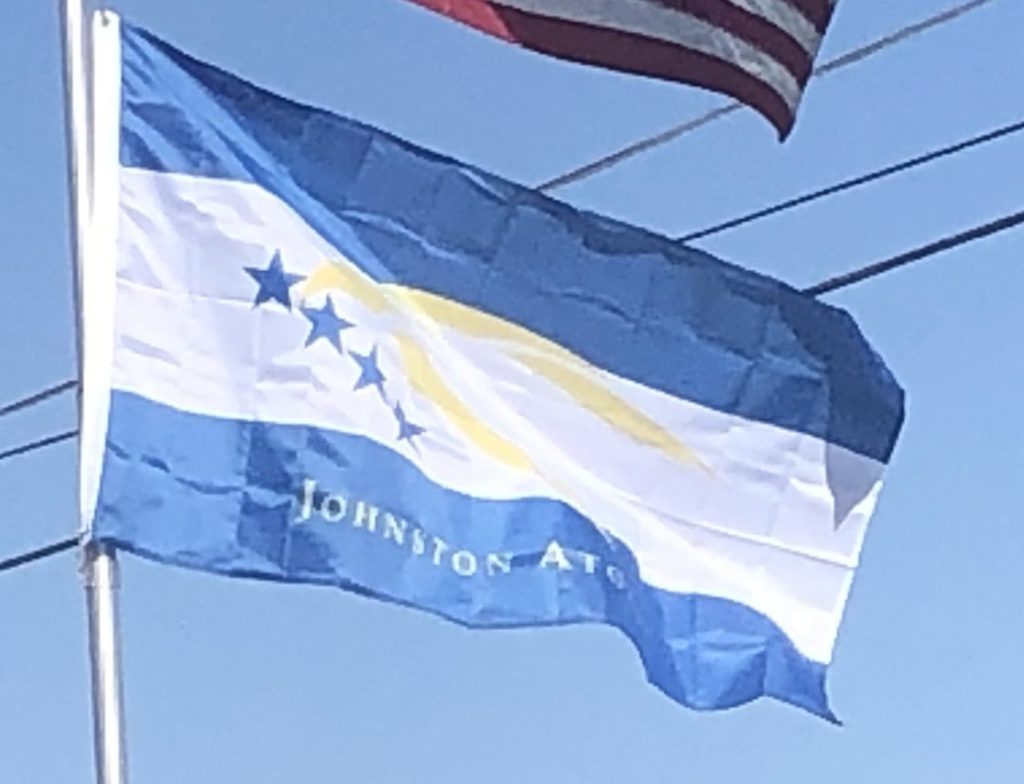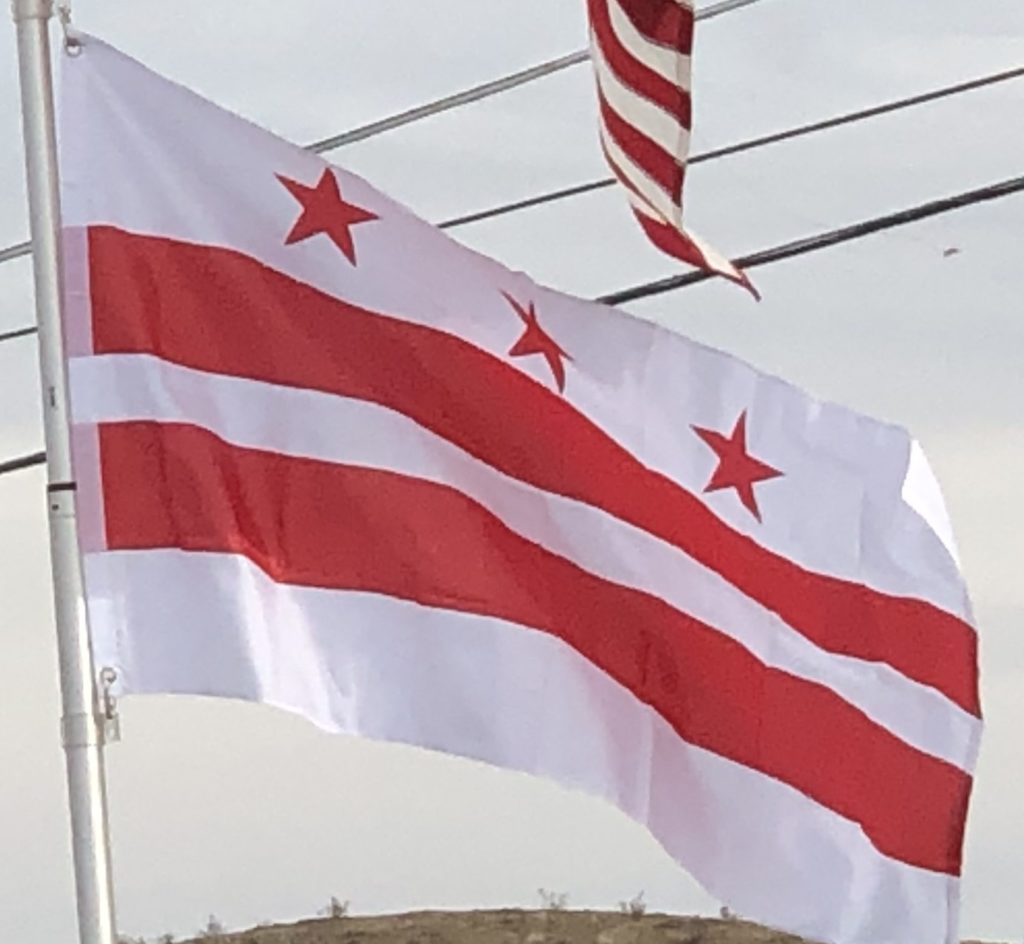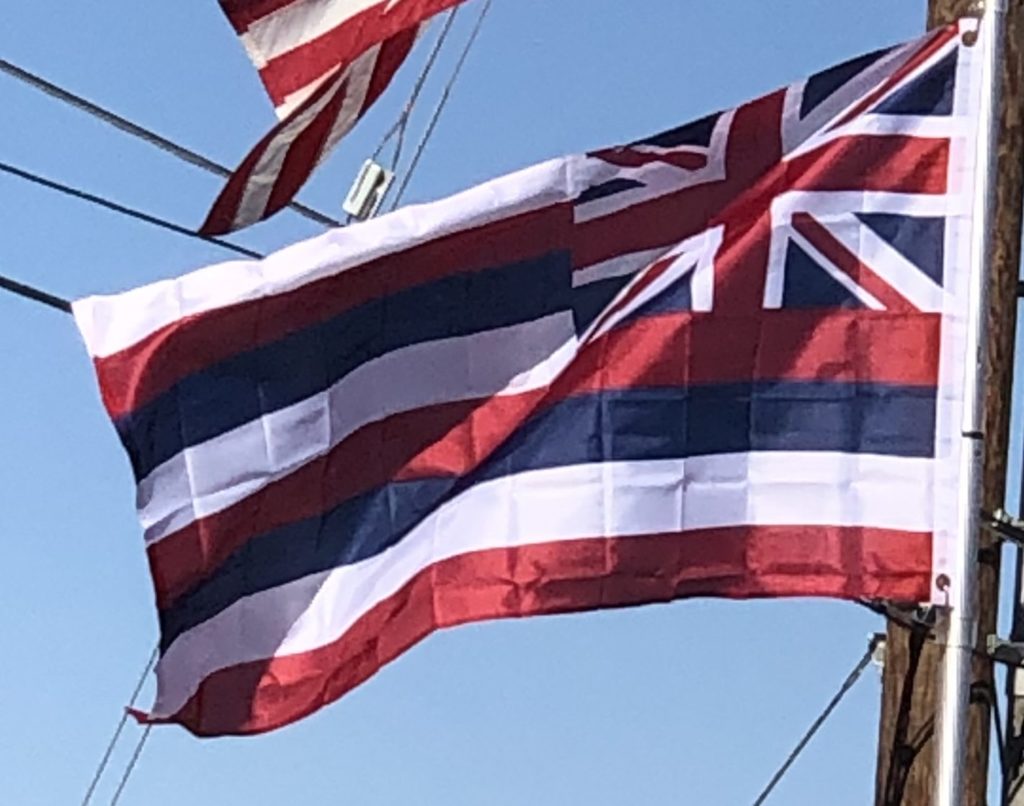Flags
American Samoa
The colors and symbols of the flag carry cultural, political, and regional meanings. The red, white and blue represent the colors traditionally utilized by both the United States and Samoa. The bald eagle represents the U.S. and features on the flag, although it does not live in American Samoa. It clutches two Samoan symbols, alluding to America’s guardianship over American Samoa, as well as evoking the Great Seal of the United States. The symbols are a uatogi (a war club, epitomizing the government’s power) and a fue (a fly-whisk, representing the wisdom of traditional Samoan leaders).
Palmyra Atoll
As is the case with all unorganized territories of the United States, incorporated or not, the official flag of Palmyra Atoll is the flag of the United States. The flag shown is strictly unofficial. I cannot locate any information about the designer of the flag nor when it was created and first flown, if, in fact, it has ever flown on the atoll itself. Guess would be that is was designed by a previous owner or by Nature Conservancy staff, but this is strictly a guess.
Wake Island
The most significant image on the flag is that of a large yellow circle set in the center of the blue section. This circle, reminiscent of a coin or medallion, is emblazoned with a rough map of the island done in blue. Wake Island is written on the top and bottom of this disk in capital letters as well, also in blue. The flag also incorporates another element from the American flag, the presence of stars. The yellow circle is surrounded by three stars. These stars are also yellow in color and each one has five points. The stars are set on the top, bottom, and right side of the circle.
Midway Atoll
The top is sky blue, the thin stripe is white for the beach and the turquoise bottom stripe is for the color of the surrounding ocean. The bird, a Laysan Albatross, is white and black. It was designed for the Memorial Day 2000 event being held at the USS Arizona. The flag was designed by the Midway Atoll National Wildlife Refuge staff with assistance of a National Park Service employee. This flag has no official status, other than that it will be used to represent Midway Island in a Memorial Day ceremony. The flag has the same status as a small US city’s flag – it is accepted as the flag by the inhabitants even though the federal government hasn’t given the flag official status.
Puerto Rico – The Island of Enchantment
Juan de Mata Terreforte, an exiled veteran of “El Grito de Lares” and Vice-President of the Cuban Revolutionary Committee, in New York City, adopted the flag of Lares as the flag of Puerto Rico until 1895, when the current design, modeled after the Cuban flag, was unveiled and adopted by the 59 Puerto Rican exiles of the Cuban Revolutionary committee. The new flag, which consisted of five equal horizontal bands of red (top and bottom) alternating with white; a blue isosceles triangle based on the hoist side bears a large, white, five-pointed star in the center, was first flown in Puerto Rico on March 24, 1897, during the “Intentona de Yauco” revolt. The use and display of the Puerto Rican flag was outlawed and the only flags permitted to be flown in Puerto Rico were the Spanish flag (1492 to 1898) and the flag of the United States (1898 to 1952).
Johnston Atoll
While the official flag of Johnston Atoll is the flag of the United States an unofficial flag of Johnston Atoll was created used to represent the island in a December 7, 2001 Pearl Harbor ceremony. The flag was flown below the Stars and Stripes. The double bird holding 4 stars represents both the Air Force and the Fish and Wildlife Service, while the four stars denote the atoll’s islands; the white is for coral and the aquamarine for the surrounding ocean.
Washington DC – A Capital City
The flag of Washington, D.C., consists of three red stars above two red bars on a white background. It is an armorial banner based on the design of the coat of arms of George Washington, first used to identify the family in the 12th century, when one of George Washington’s ancestors took possession of Washington Old Hall, County Durham, northeast England. As elements in heraldry, the stars are properly called mullets.
Hawai’i -The Aloha State
There are various accounts of the earliest history of the flag of Hawai’i. One relates how King Kamehameha I flew a British flag, probably a Red Ensign, given to him by British explorer Captain George Vancouver as a token of friendship with King George III. Subsequent visitors reported seeing the flag flying from places of honor, as it was then considered an official Hawai’ian flag. As the union jack added diagonal red cross of St Patrick in 1801, so did the flag of Hawai’i. An adviser to Kamehameha noted that the Union Flag could draw Hawai’i into international conflict, as his kingdom could be seen as an ally of the United Kingdom, and he subsequently lowered the Union Flag over his home at Kamakahonu. While disputed as historically accurate, one account stated that in order to placate U.S. interests during the War of 1812, a flag of the U.S. was raised over Kamehameha’s home, only to be removed when British officers in the court of Kamehameha vehemently objected to it. This explains why the resulting flag of Hawai’i was a deliberate hybrid of the two nations’ flags.
